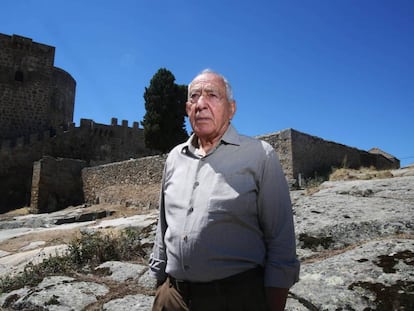Five of Spain’s most captivating castles
Travel writer Paco Nadal lists his favorite fortresses in the country, and explains why they are so special
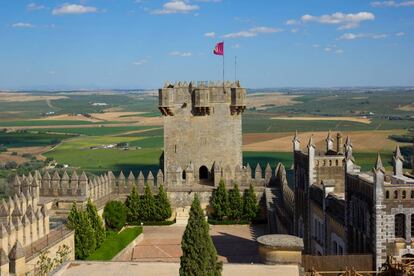
Spain is home to many castles, but these five are particularly special. They are located in areas of great natural beauty, and immediately take you back to a bygone era.
1. Almodóvar del Río Castle (Córdoba)
The Almodóvar del Río Castle owes its perfect silhouette to Raphael Desmaissiers, the 12th count of Torralava. Towards 1901, the count used his own money to restore the castle – instead of knocking it down and selling its ashlar stones as building material, as other nobles used to do. The magnificent palace-fortress is one of the best-preserved in Spain’s southern region of Andalusia. It overlooks the Guadalquivir River, and is made in the Gothic-Mudejar architectural style. Enrique II of Castile ordered the castle to be built on top of an old Arab fort in the 14th century. The King of Castile and León, Pedro the Cruel, who ruled from 1350 to 1366, moved his court to the castle. The rooms are decorated with figures from the period that help visitors understand everyday life in a medieval fort.
2. La Calahorra Castle (Granada)
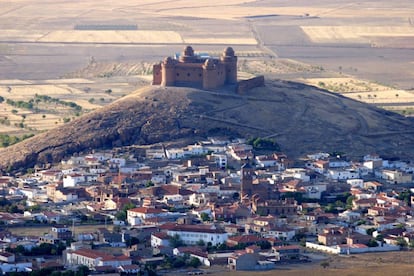
Guadix is one of the most unique cities in Spain’s southern province of Granada. But what many travelers don’t know is that a few kilometers away, there is county that is just as special – the Marquisate of Cenete. This is the home of the La Calahorra Castle, an atypical castle that sits atop a sloping hill at the foot of the Sierra Nevada mountain range. It was ordered to built by Don Rodrigo Díaz de Vivar y Mendoza, the count of Cid and marquis of Cenete. Spanish engineers began to build the military fortress in 1509. But the marquis, who knew what was fashionable beyond the Pyrenees, tasked Italian architects with designing the palace. No expense was spared: all of the marble was brought in from Italy. The work on the Renaissance-style palace was completed in 1512, and the marquis lived there until his death in 1523.
In 1910, a wealthy American tried to buy the building, and move it to his ranch in the United States, a practice that was popular among the American “nobility” at the beginning of the 20th century. The palace features a Renaissance cloister, is filled with Carrara marble, and has original wooden coffering dating back to 1509.
3. Loarre Castle (Huesca)

The first thing that most visitors do when they arrive at Loarre Castle is tap their knuckles on the façade to check that it is real. But it is real, and their knuckles may regret hitting the hard limestone masonry erected in the 11th century by King of Pamplona Sancho Garcés III, also known as Sancho the Great. The castle was built to strengthen the king’s position against Muslim forces at the unstable Pyrenees border. This proud and solitary castle, which sits on a rocky cliff, is now viewed as one of the best examples of Romanesque civil and military architecture. Given the castle was only briefly at the forefront of the Aragon kingdom, it was able to escape major clashes and sieges. This meant that its strong walls, two crenelated towers (the keep and Tower of the Queen), the convent grounds and the beautiful Romanesque church were hardly damaged. Today Loarre is a gem of Romanesque architecture in Europe.
4. La Mota Castle (Jaén)
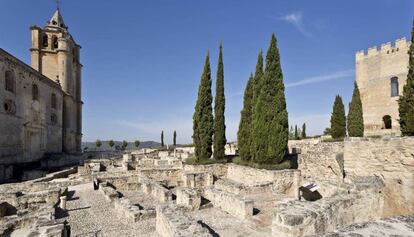
The La Mota Castle stands on a hill overlooking Alcalá la Real, in the southern Jaén province. It is the most important fortress of what we now call the Caliphate Route – the historic road that linked Cordoba with Granada, which was one of the most important trade and military routes of Muslim Spain, or Al-Andalus. La Mota is one of the most impressive castles of the county, and is of great historical and artistic value. You only need to look at the castle from a distance, surrounded by a sea of olive trees, to appreciate its beauty. The castle was built on an indigenous settlement where Arab invaders had built a walled city, complete with a mosque and an Alcazaba fortress. In 1341, Alfonso XI of Castile, the king of Castile, León and Galicia, seized and conquered the area. He ordered an abbey to be built inside it and reinforced its defenses. The great abbey of Santa María la Mayor, which still dominates the site, was erected in 1620. The castle fell into neglect and was further damaged during the Napoleonic invasion. Today, the fortress is home to a visitor’s center, which provides information on what it was like to live at the border in those times.
5. Vélez-Blanco Castle (Almería)
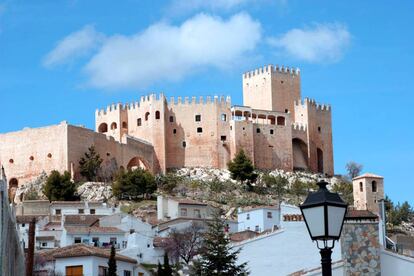
Vélez-Blanco has one of the most beautiful castles in the southern province of Almería. But to see it in its entirety, you have to cross the Atlantic Ocean. The Renaissance fortress was the official residence of Pedro Fajardo y Chacón, the marquis of Los Velez, who controlled territory throughout Almería and Murcia. The castle still stands majestically on top of a rocky outcrop that soars over the town of Vélez-Blanco in the north of Almería. It is one of the best examples of a 16th-century castle-palace. But its stunning patio, made of white Macael marble – one the treasures of the Andalusian Renaissance – was acquired by a wealthy American in 1904, and transported in pieces to the United States. Now the patio is exhibited in the New York Metropolitan Museum. It is 16 meters long and 13.5 meters wide, and features two raised galleries with lowered arches and columns, and decorative classical statues. The real castle in Almería has six turrets and a cavalry yard which connects to a drawbridge that leads to the main gate, which provides access to the noble’s area and palace. The castle is a maze of rooms, corridors and stairways, with ornamentation far beyond what would be expected of a military compound.
English version by Alicia Kember.
Tu suscripción se está usando en otro dispositivo
¿Quieres añadir otro usuario a tu suscripción?
Si continúas leyendo en este dispositivo, no se podrá leer en el otro.
FlechaTu suscripción se está usando en otro dispositivo y solo puedes acceder a EL PAÍS desde un dispositivo a la vez.
Si quieres compartir tu cuenta, cambia tu suscripción a la modalidad Premium, así podrás añadir otro usuario. Cada uno accederá con su propia cuenta de email, lo que os permitirá personalizar vuestra experiencia en EL PAÍS.
¿Tienes una suscripción de empresa? Accede aquí para contratar más cuentas.
En el caso de no saber quién está usando tu cuenta, te recomendamos cambiar tu contraseña aquí.
Si decides continuar compartiendo tu cuenta, este mensaje se mostrará en tu dispositivo y en el de la otra persona que está usando tu cuenta de forma indefinida, afectando a tu experiencia de lectura. Puedes consultar aquí los términos y condiciones de la suscripción digital.
More information
Archived In
Últimas noticias
Most viewed
- Reinhard Genzel, Nobel laureate in physics: ‘One-minute videos will never give you the truth’
- Pablo Escobar’s hippos: A serious environmental problem, 40 years on
- Charles Dubouloz, mountaineering star, retires at 36 with a farewell tour inspired by Walter Bonatti
- Why we lost the habit of sleeping in two segments and how that changed our sense of time
- The fall of a prolific science journal exposes the billion-dollar profits of scientific publishing

